This document provides an overview of machine learning and deep learning concepts. It begins with an introduction to machine learning basics, including supervised and unsupervised learning. It then discusses deep learning, why it is useful, and its main components like activation functions, optimizers, and regularization methods. The document explains deep neural network architecture including convolutional neural networks. It provides examples of convolutional and max pooling layers and how they help reduce parameters in neural networks.
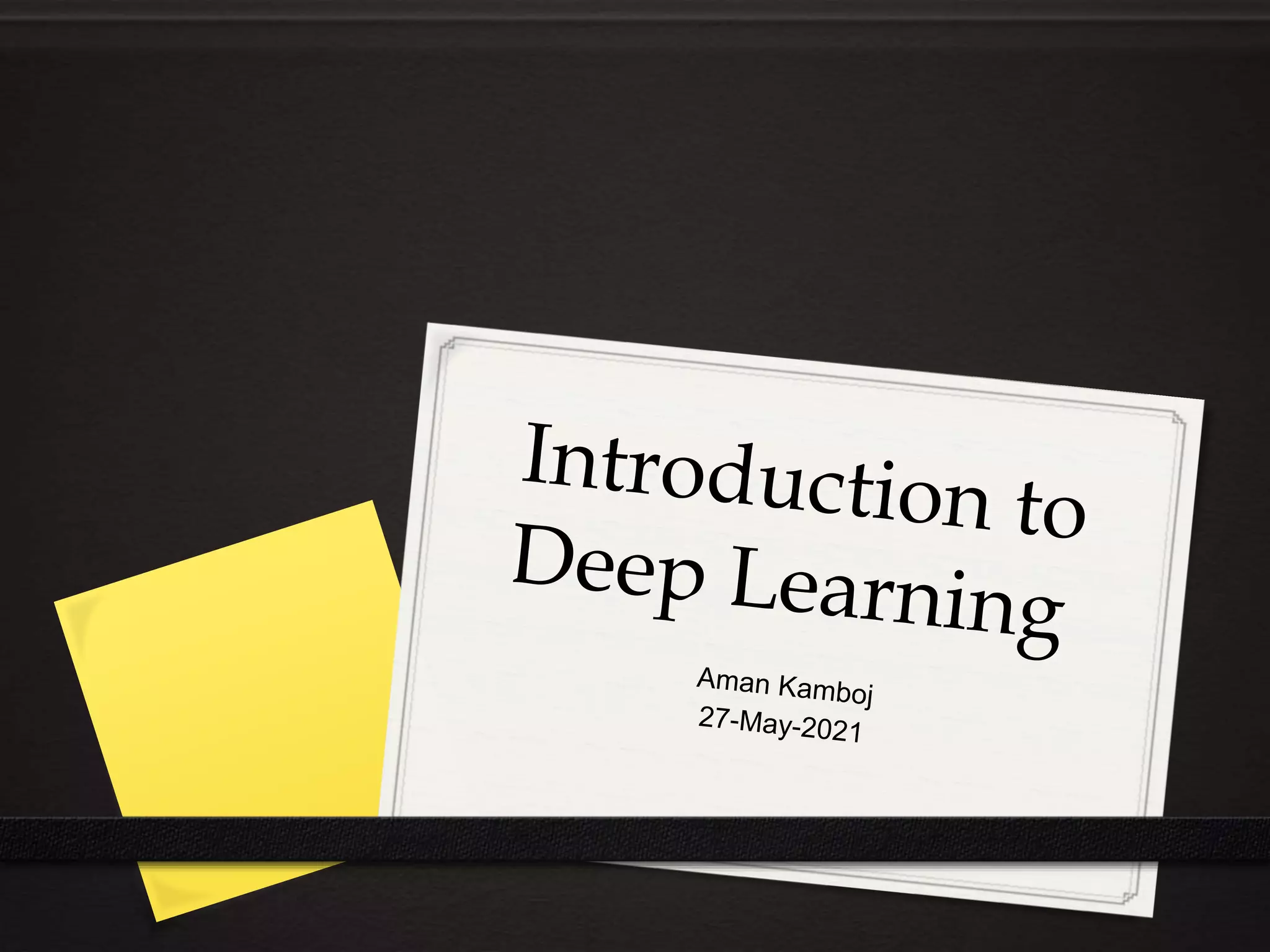
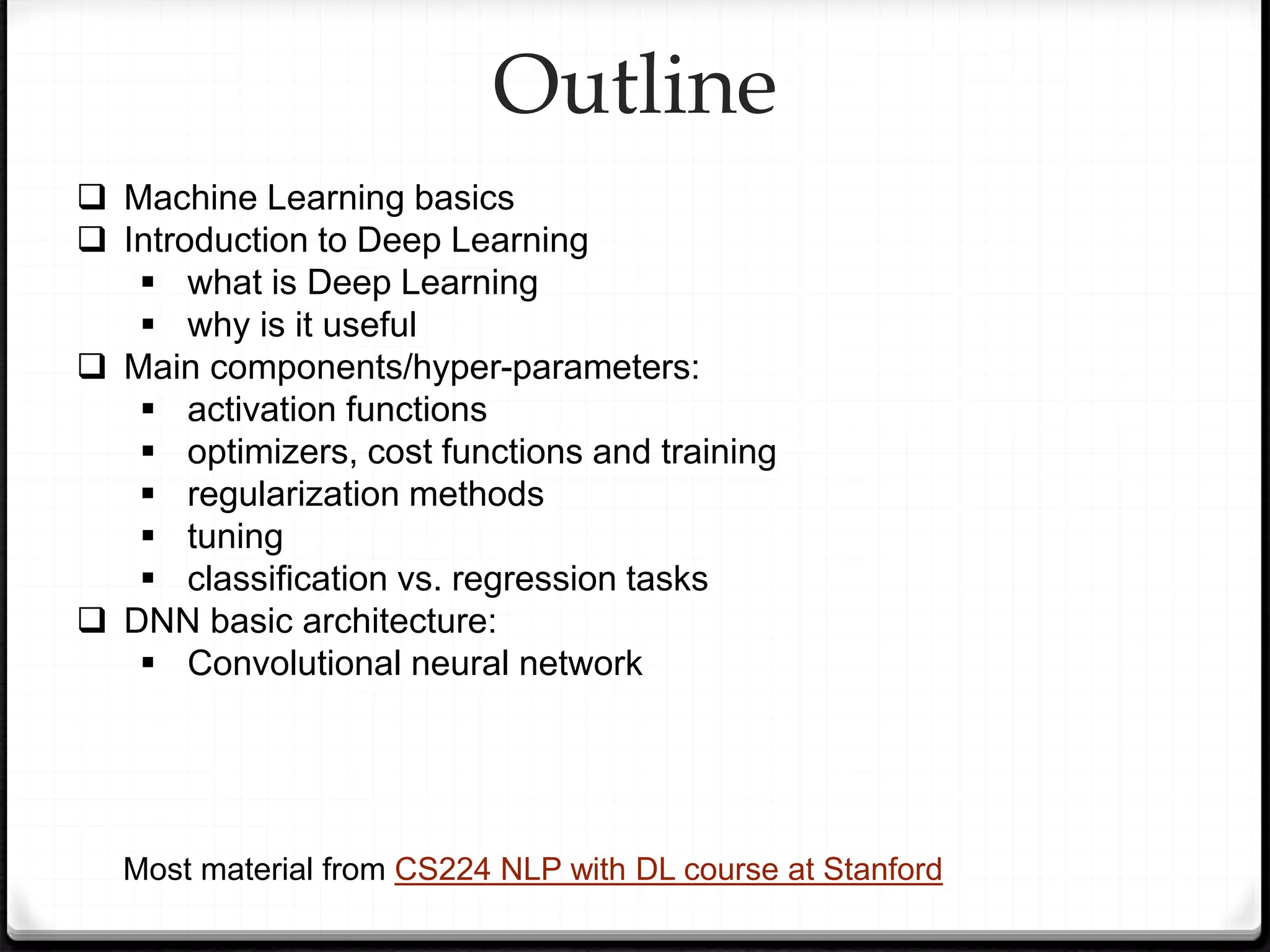

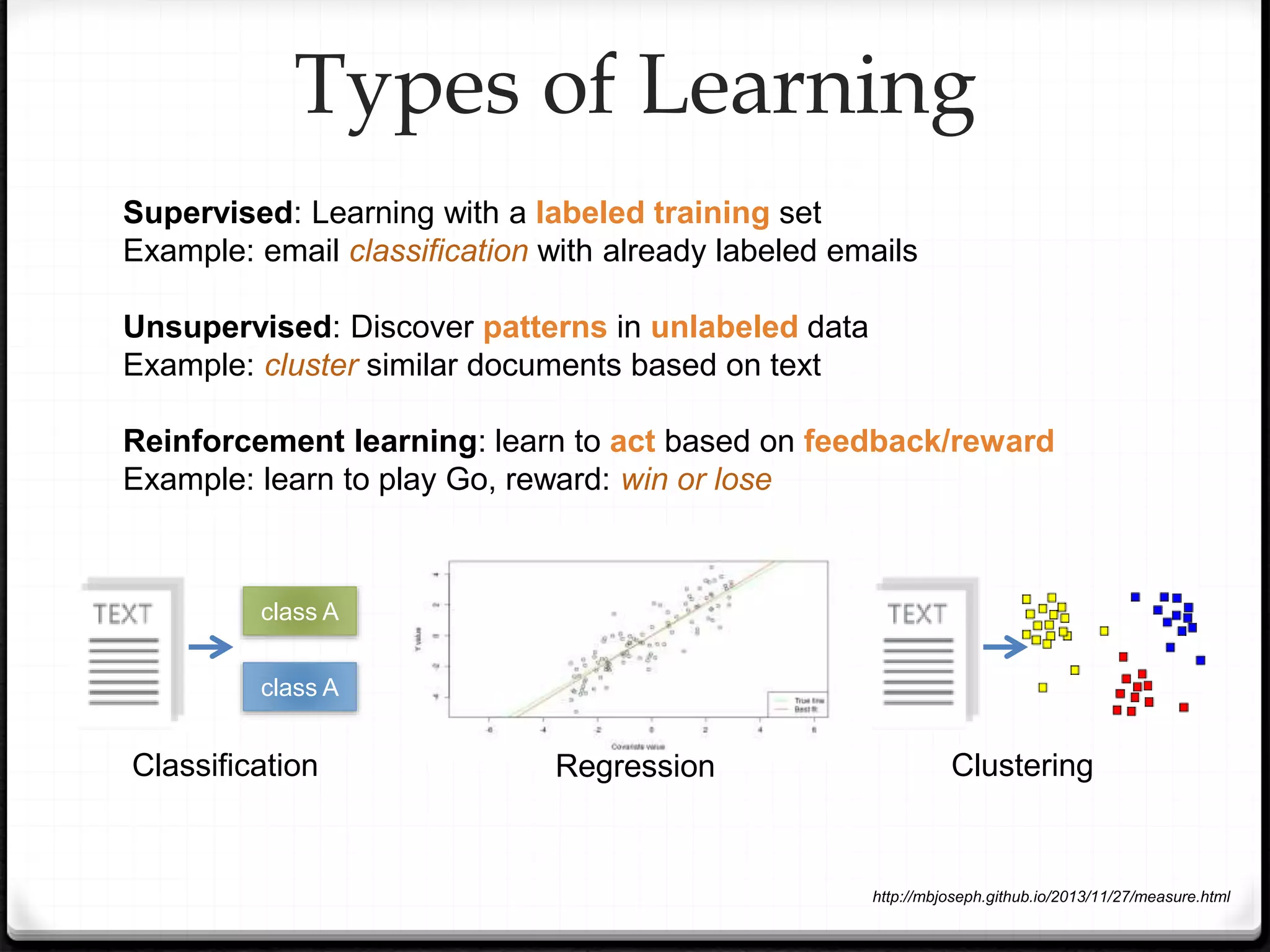
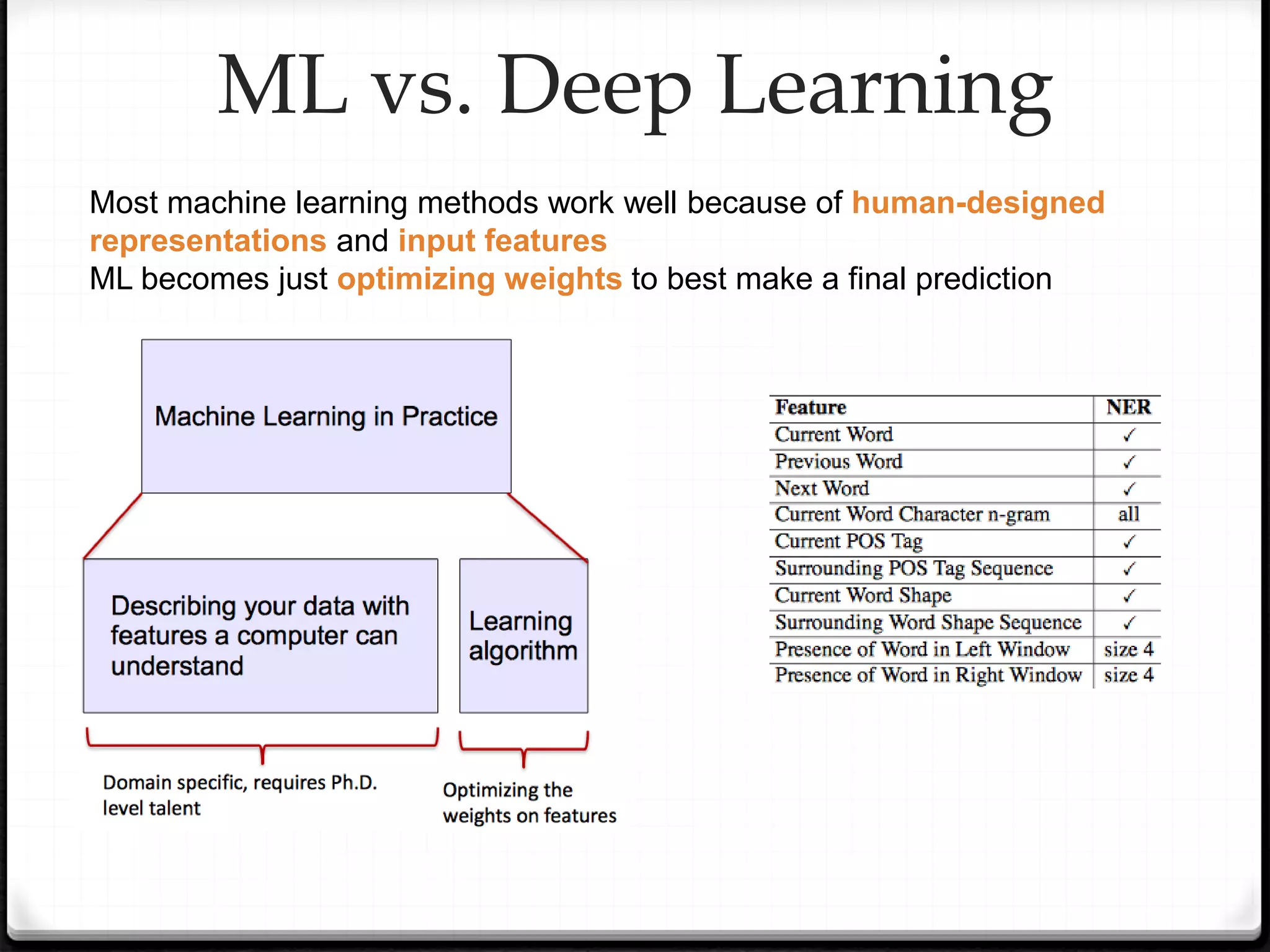
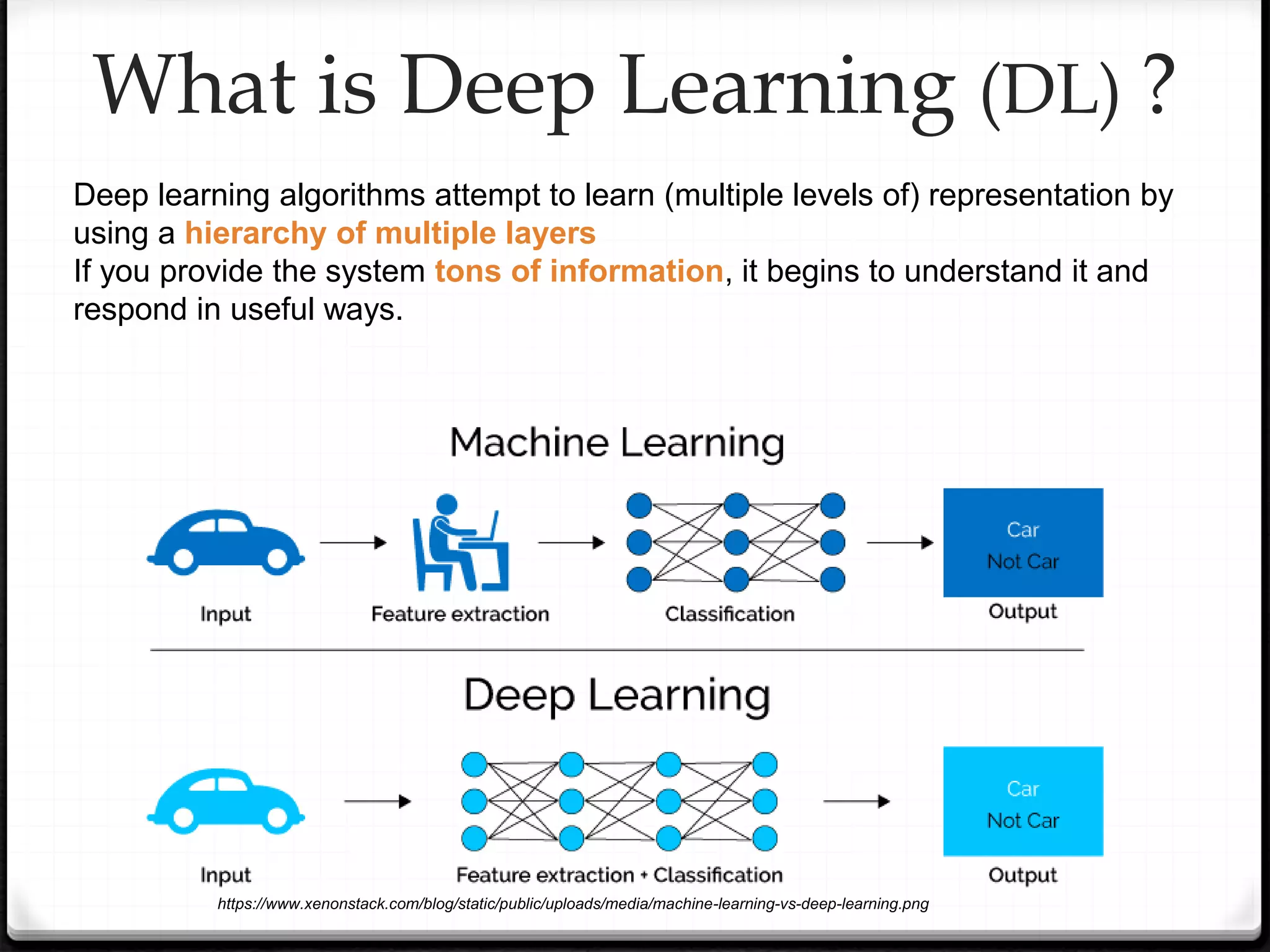
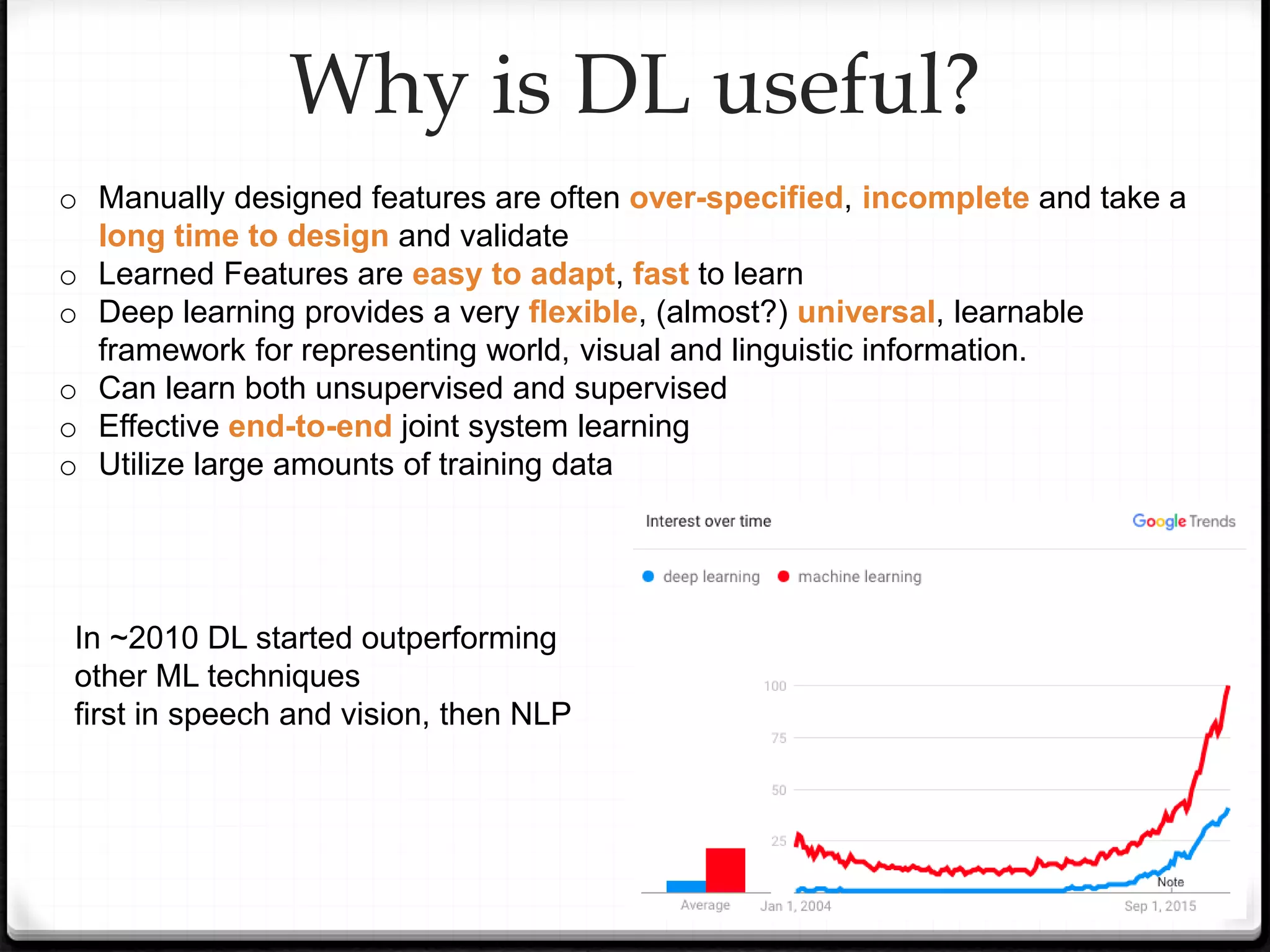
![Neural Network Intro
Demo
How do we train?
𝒉 = 𝝈(𝐖𝟏𝒙 + 𝒃𝟏)
𝒚 = 𝝈(𝑾𝟐𝒉 + 𝒃𝟐)
𝒉
𝒚
𝒙
4 + 2 = 6 neurons (not counting inputs)
[3 x 4] + [4 x 2] = 20 weights
4 + 2 = 6 biases
26 learnable parameters
Weights
Activation functions](https://image.slidesharecdn.com/deep-learning-210612061527/75/Deep-learning-8-2048.jpg)

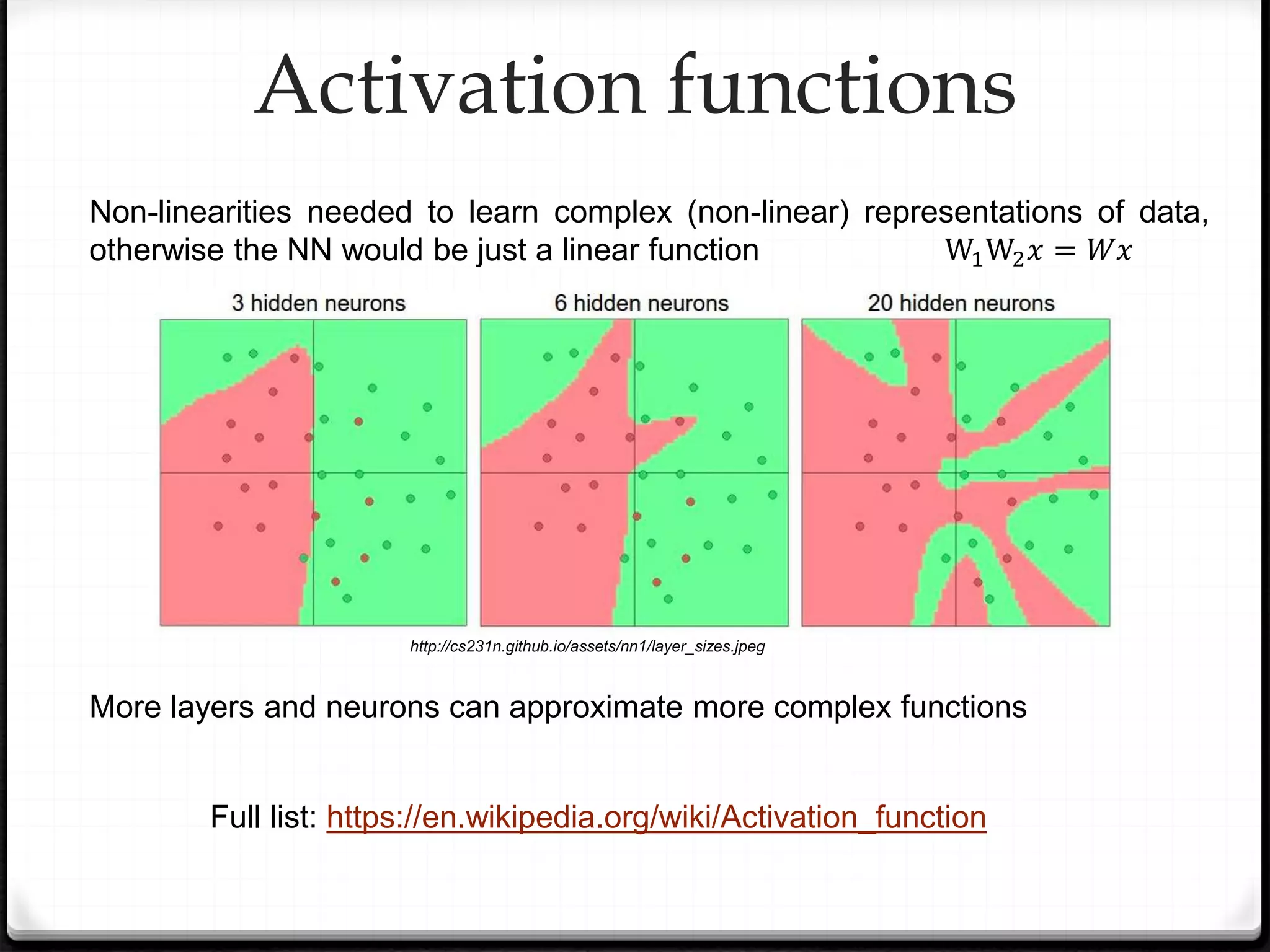

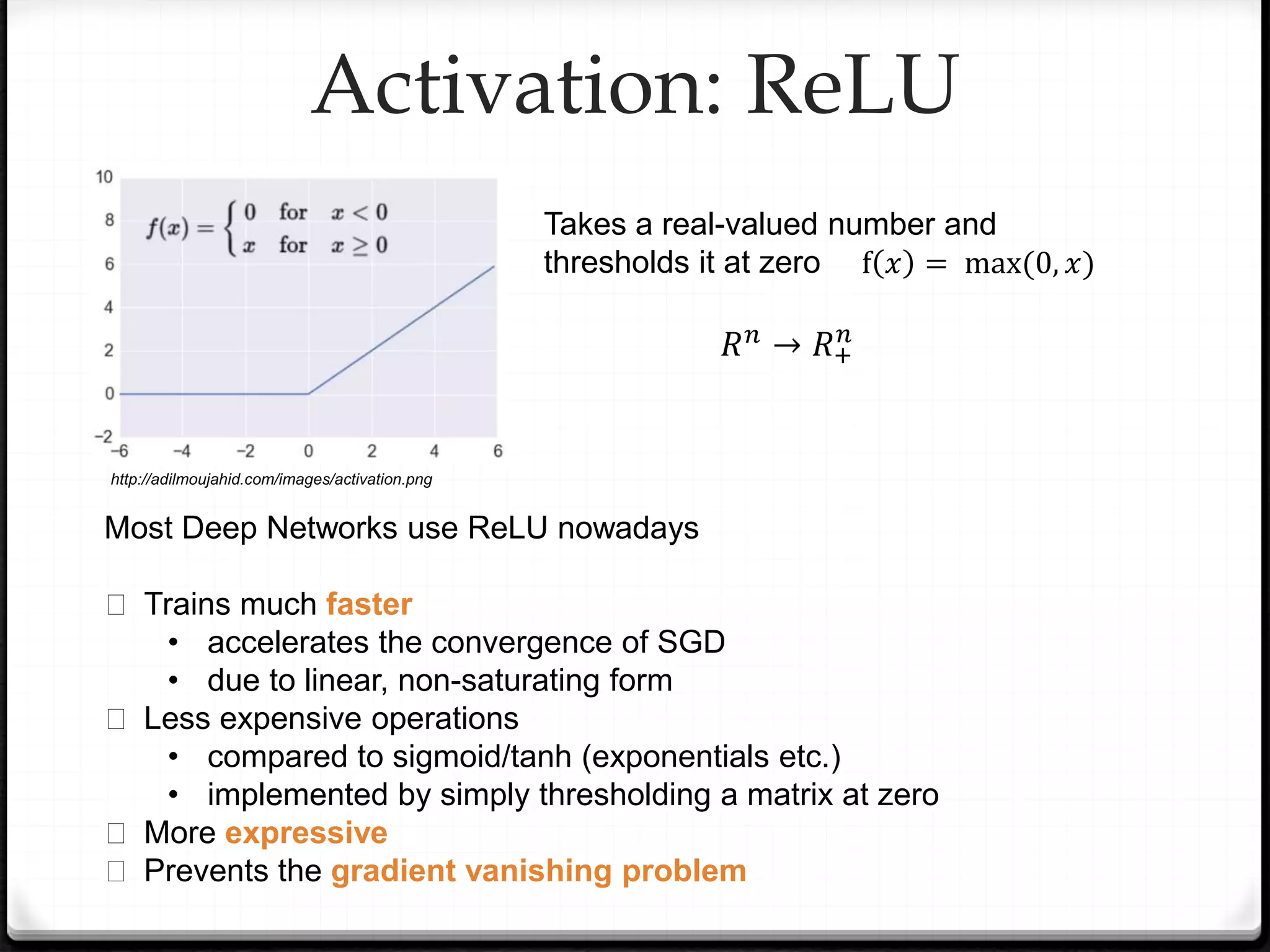
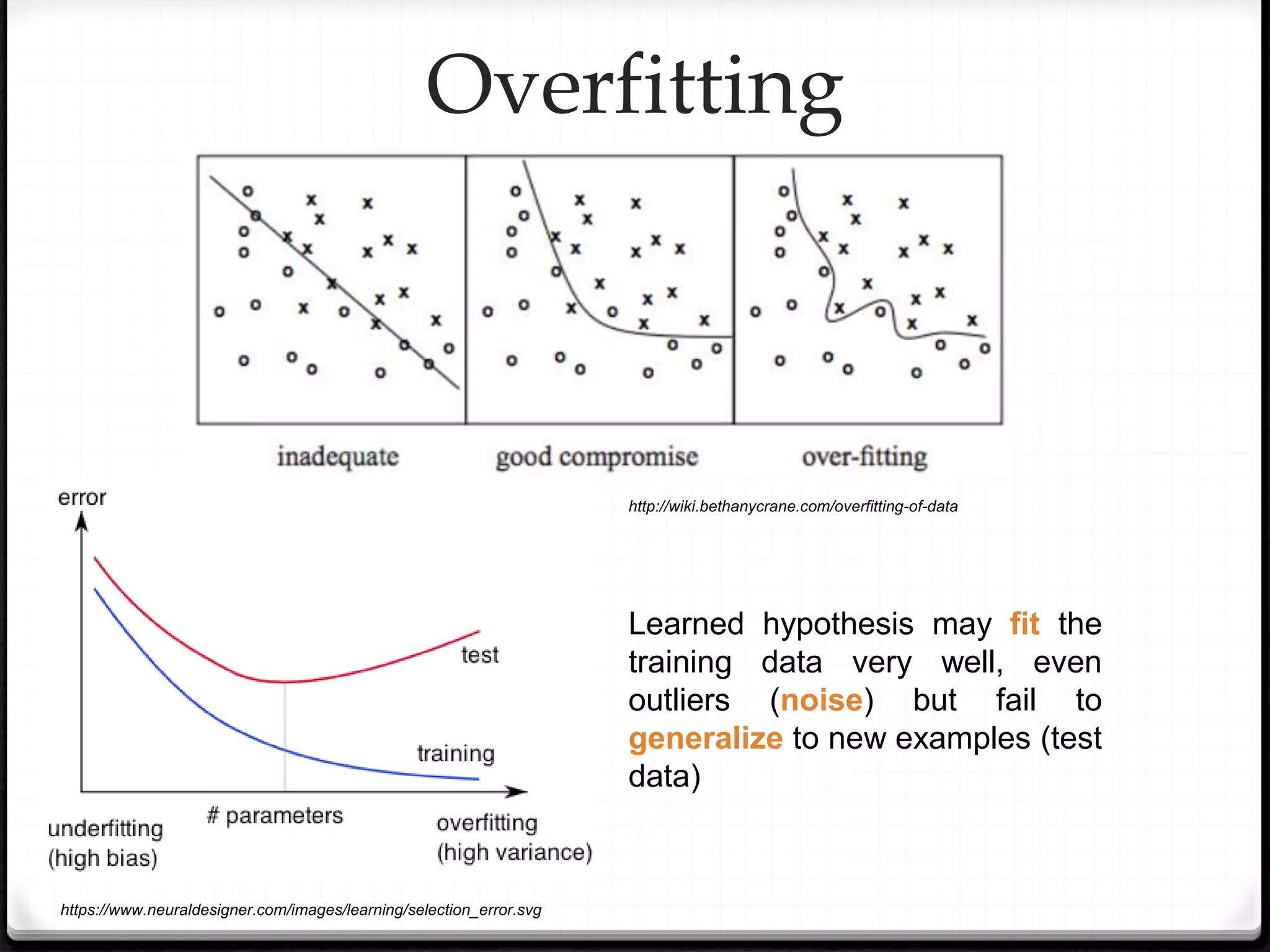
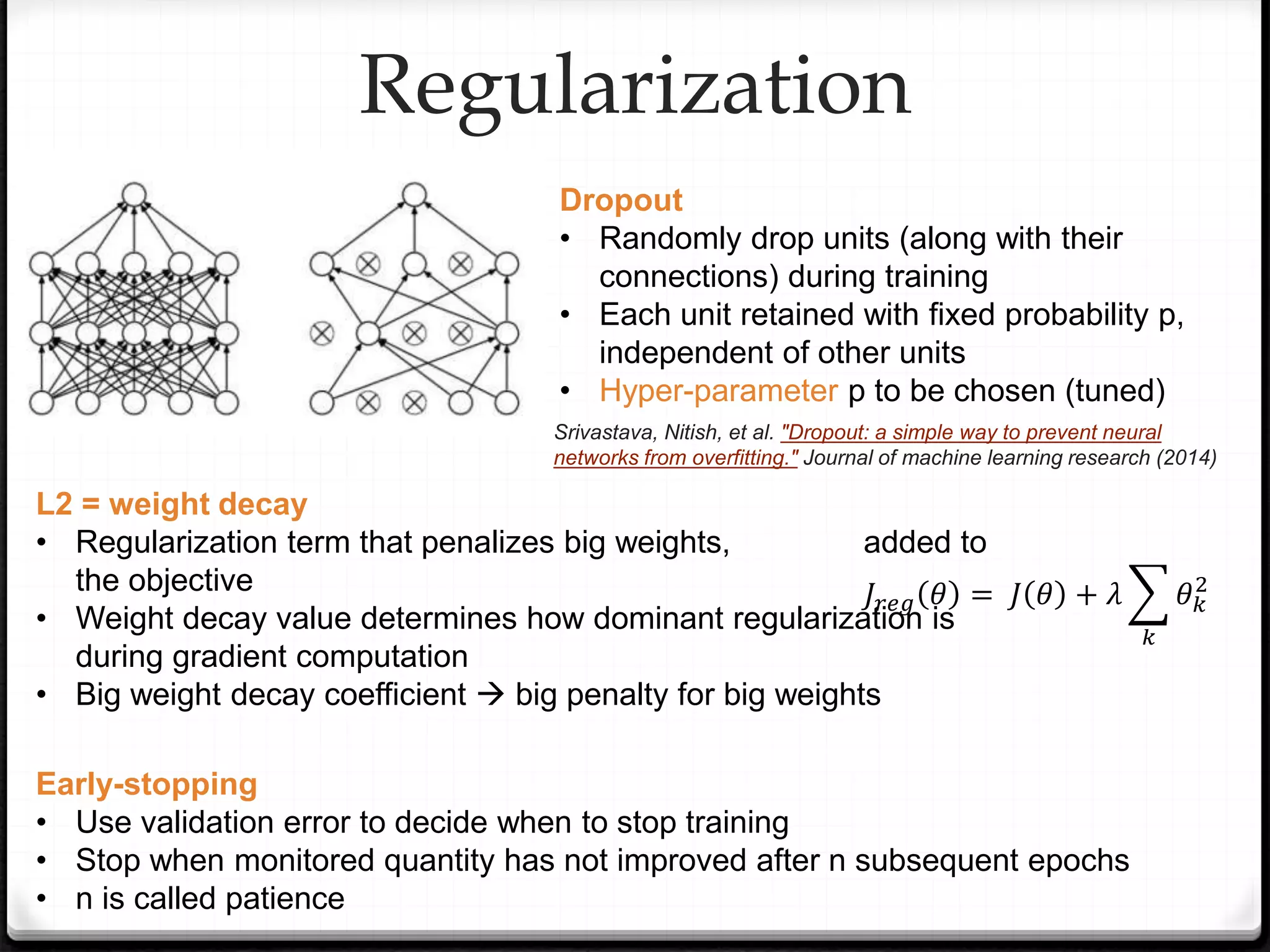
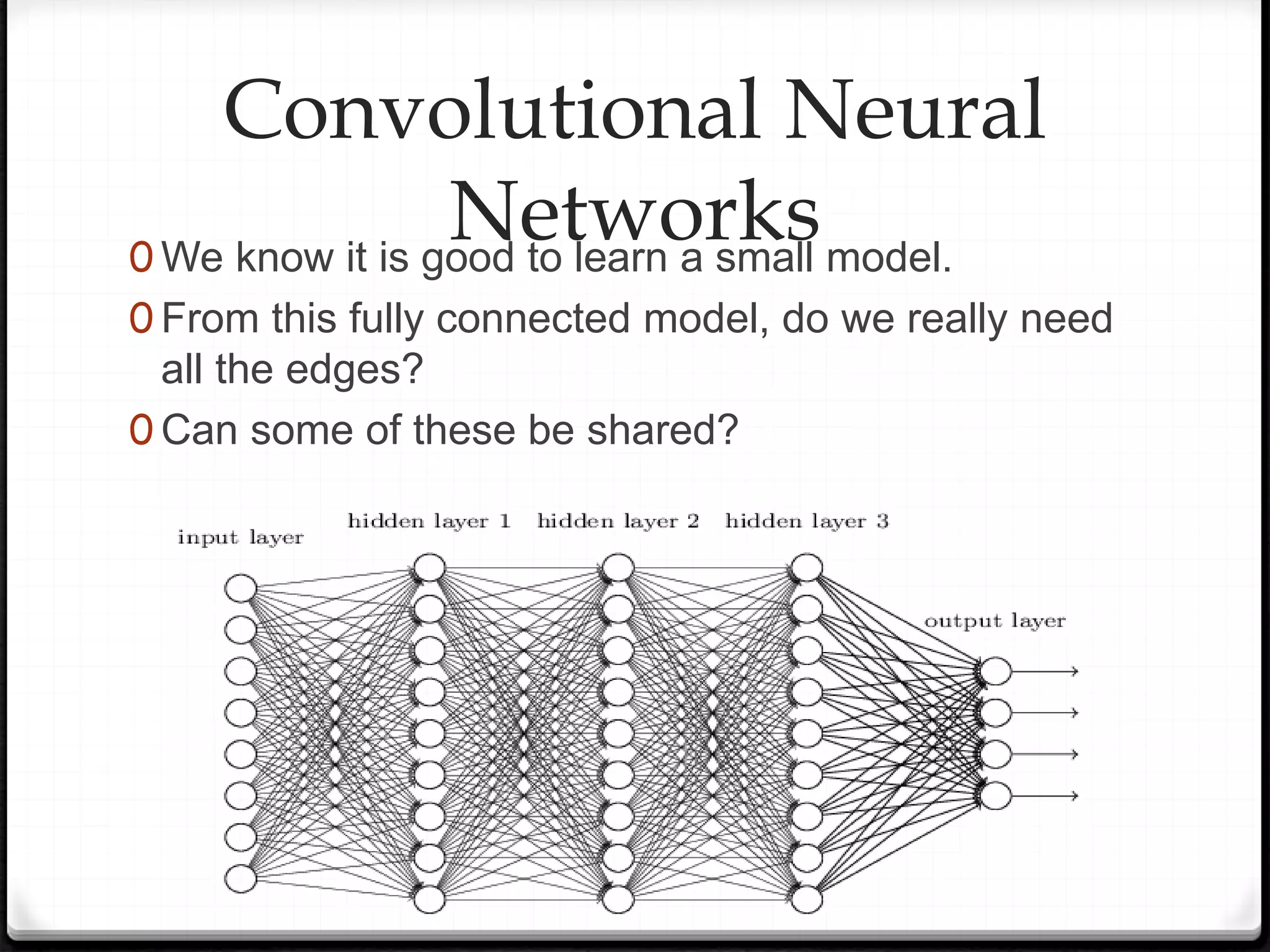
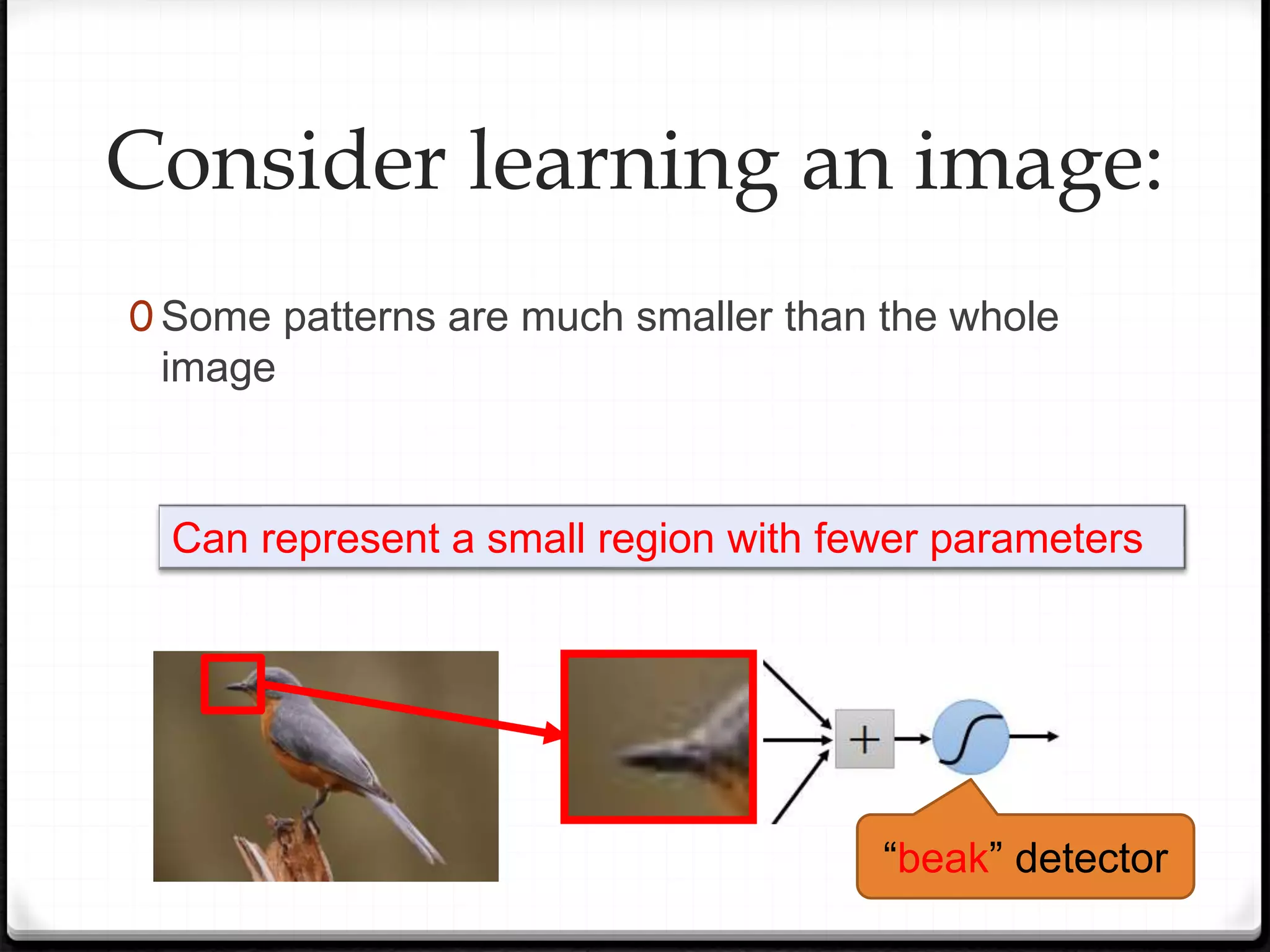
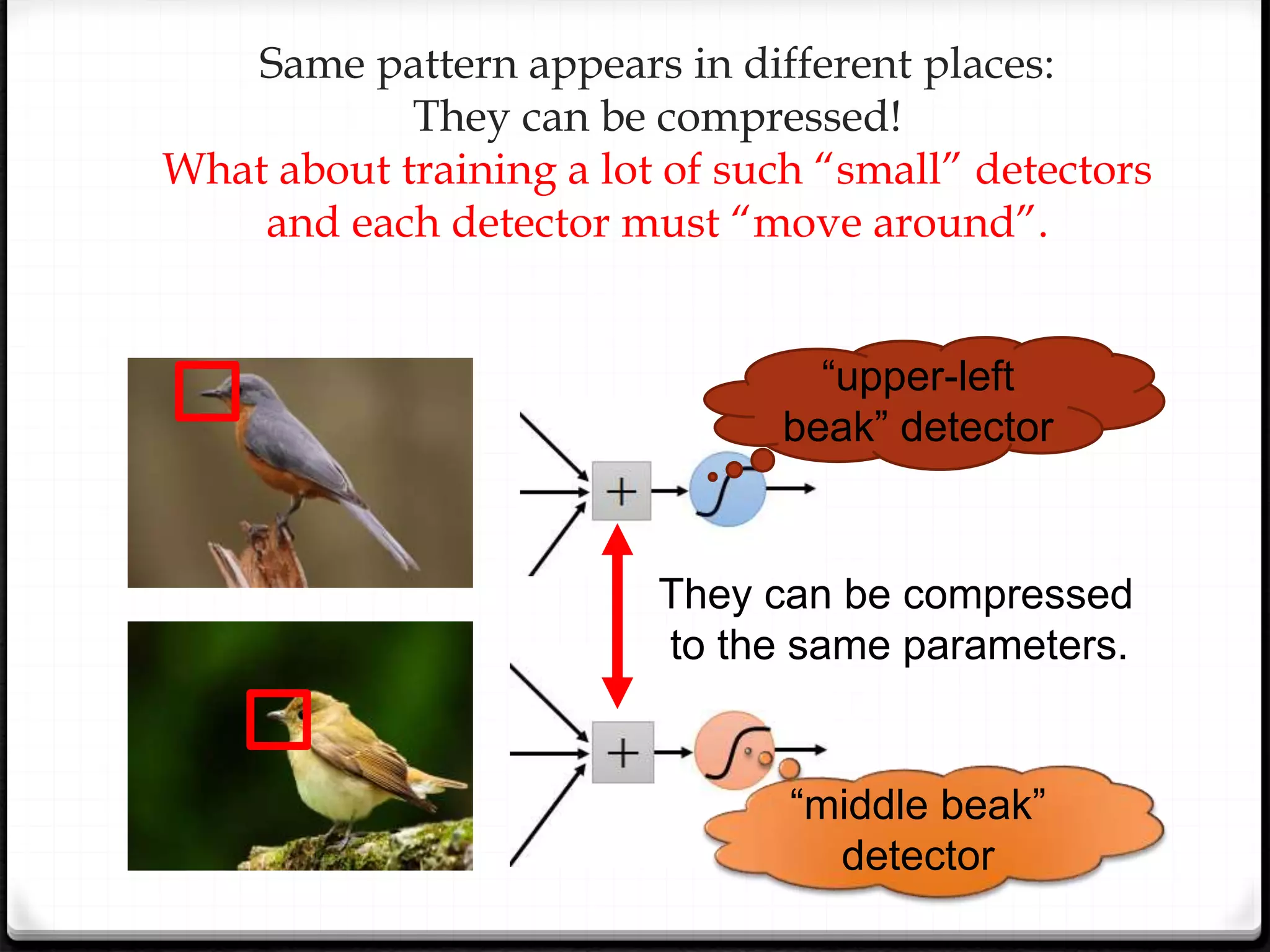
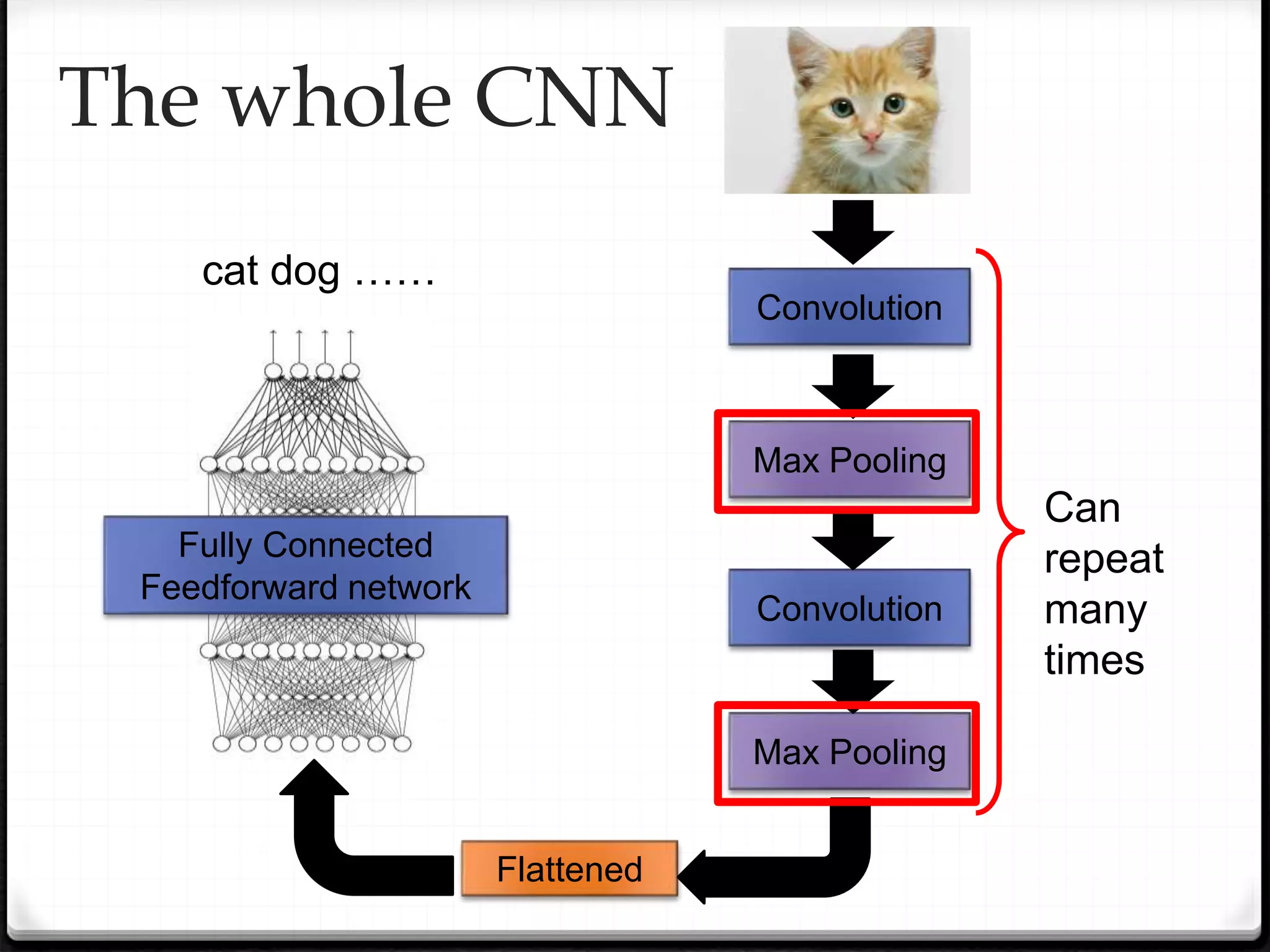
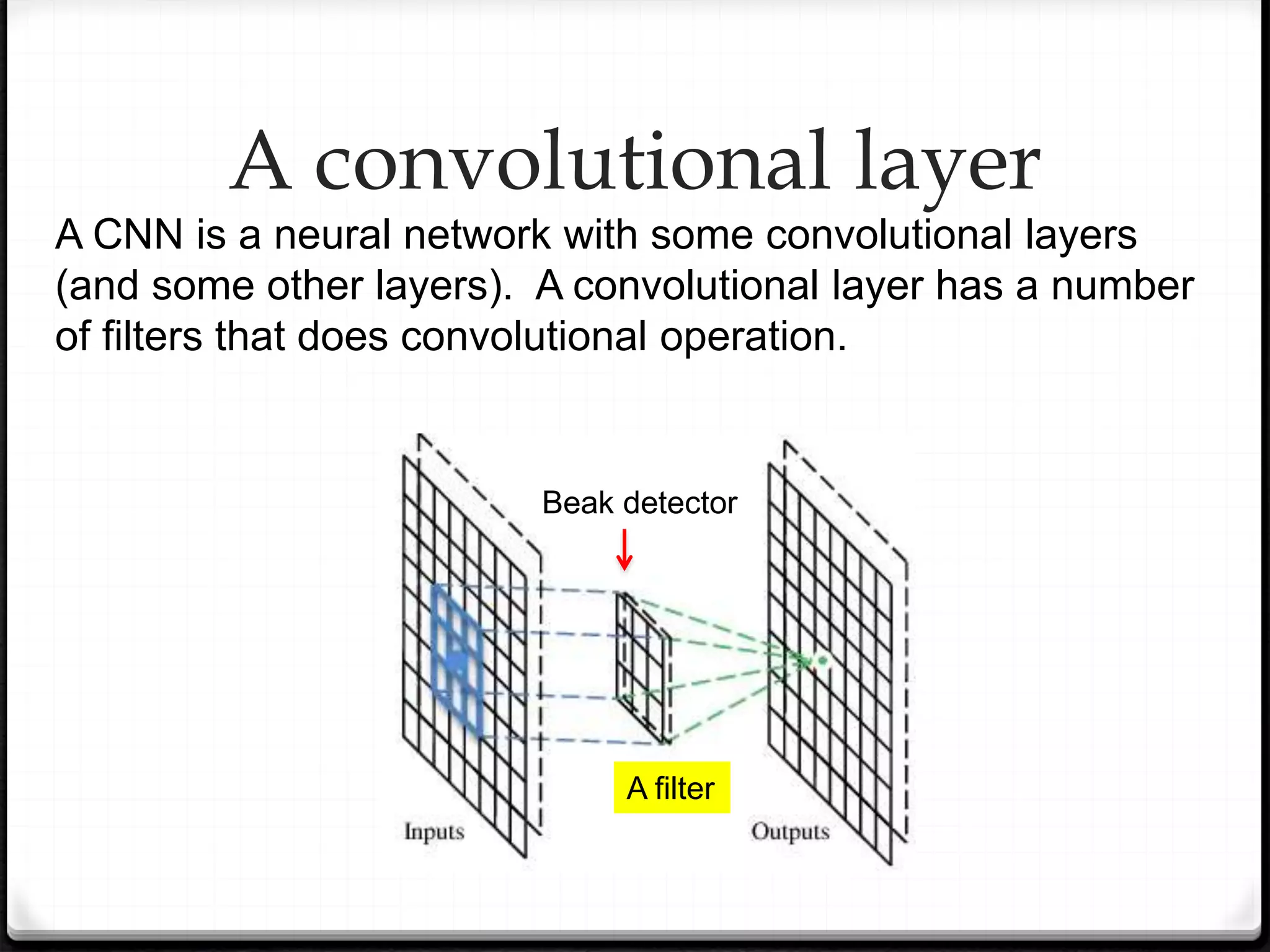
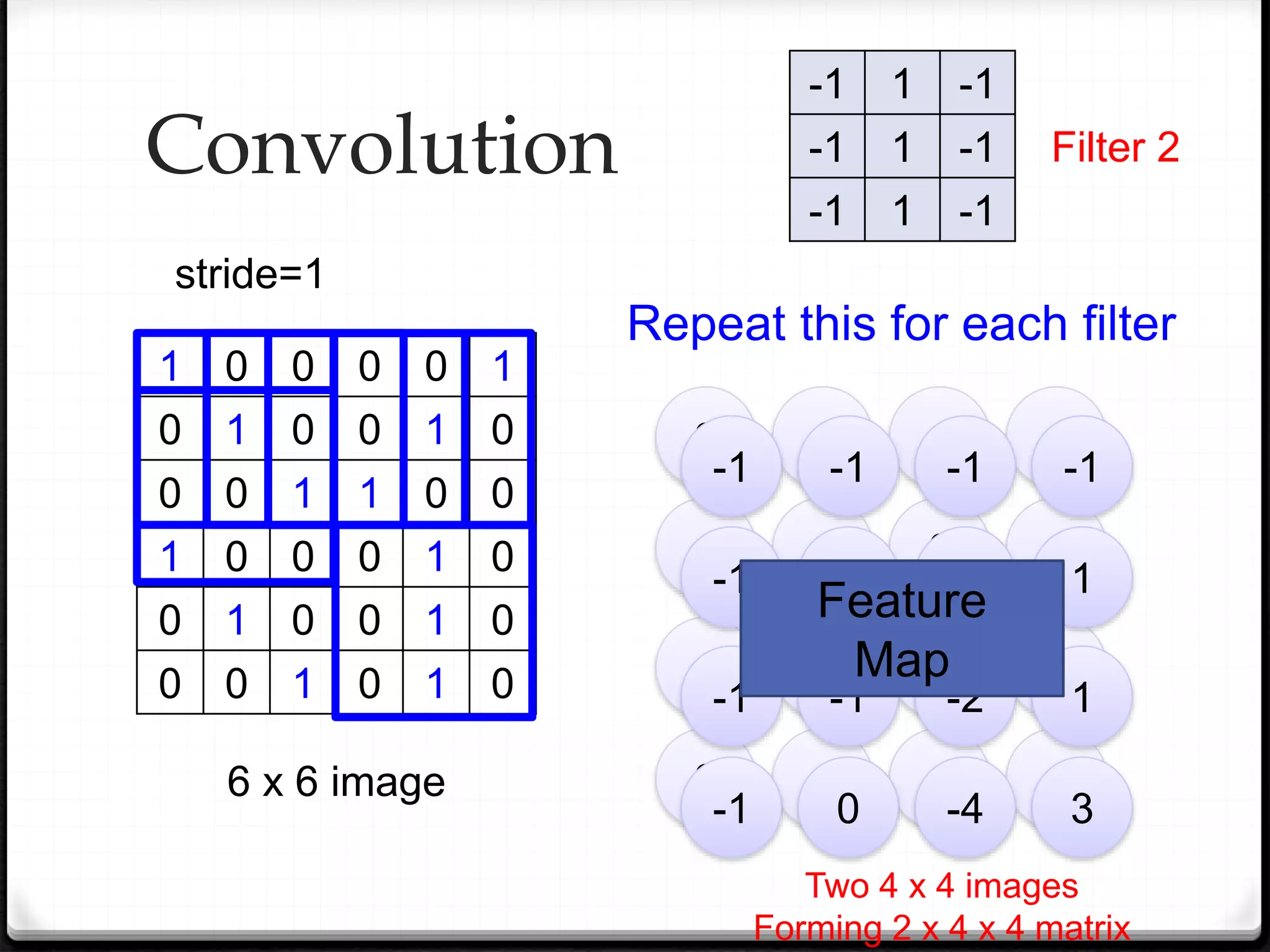
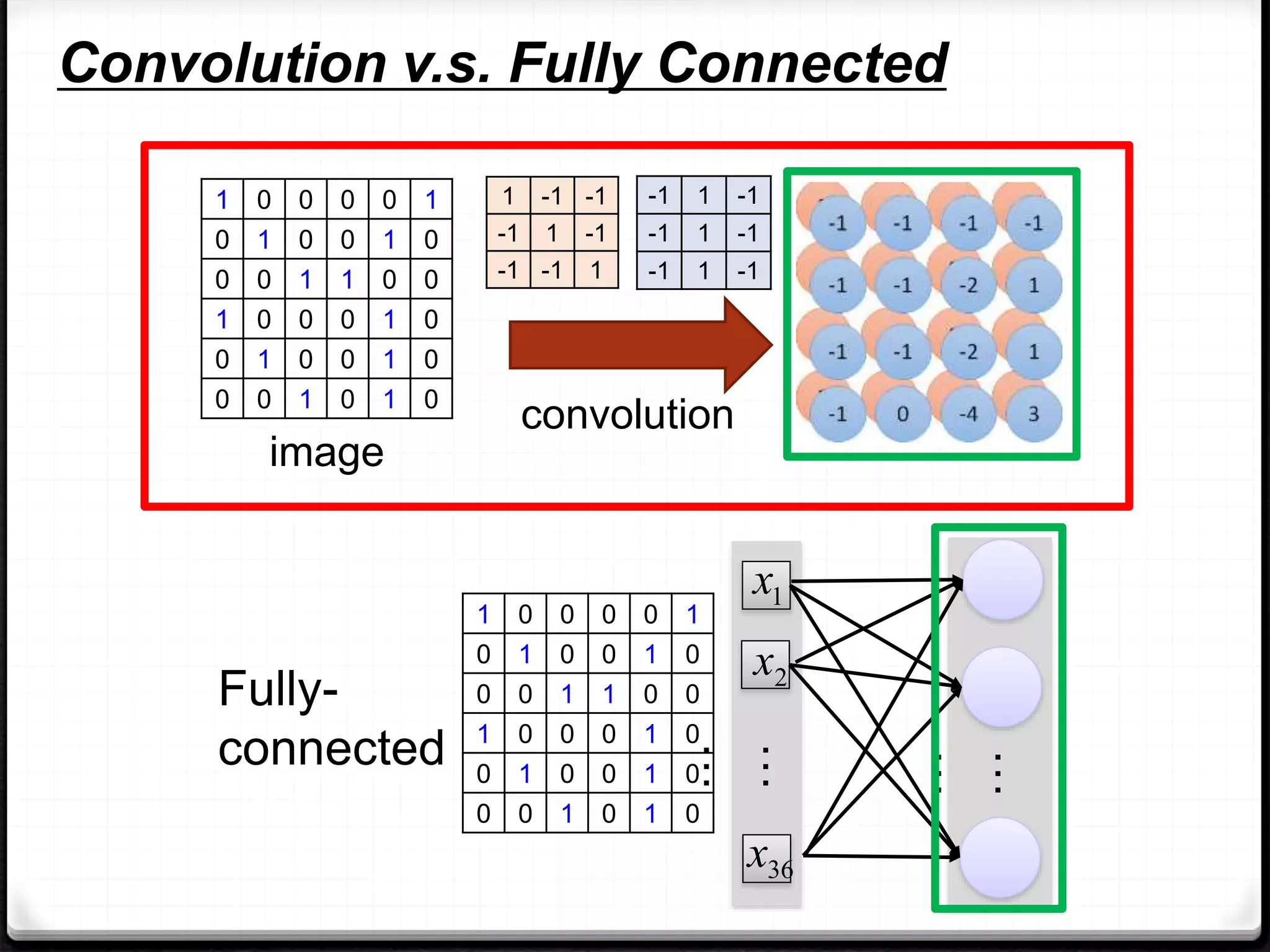

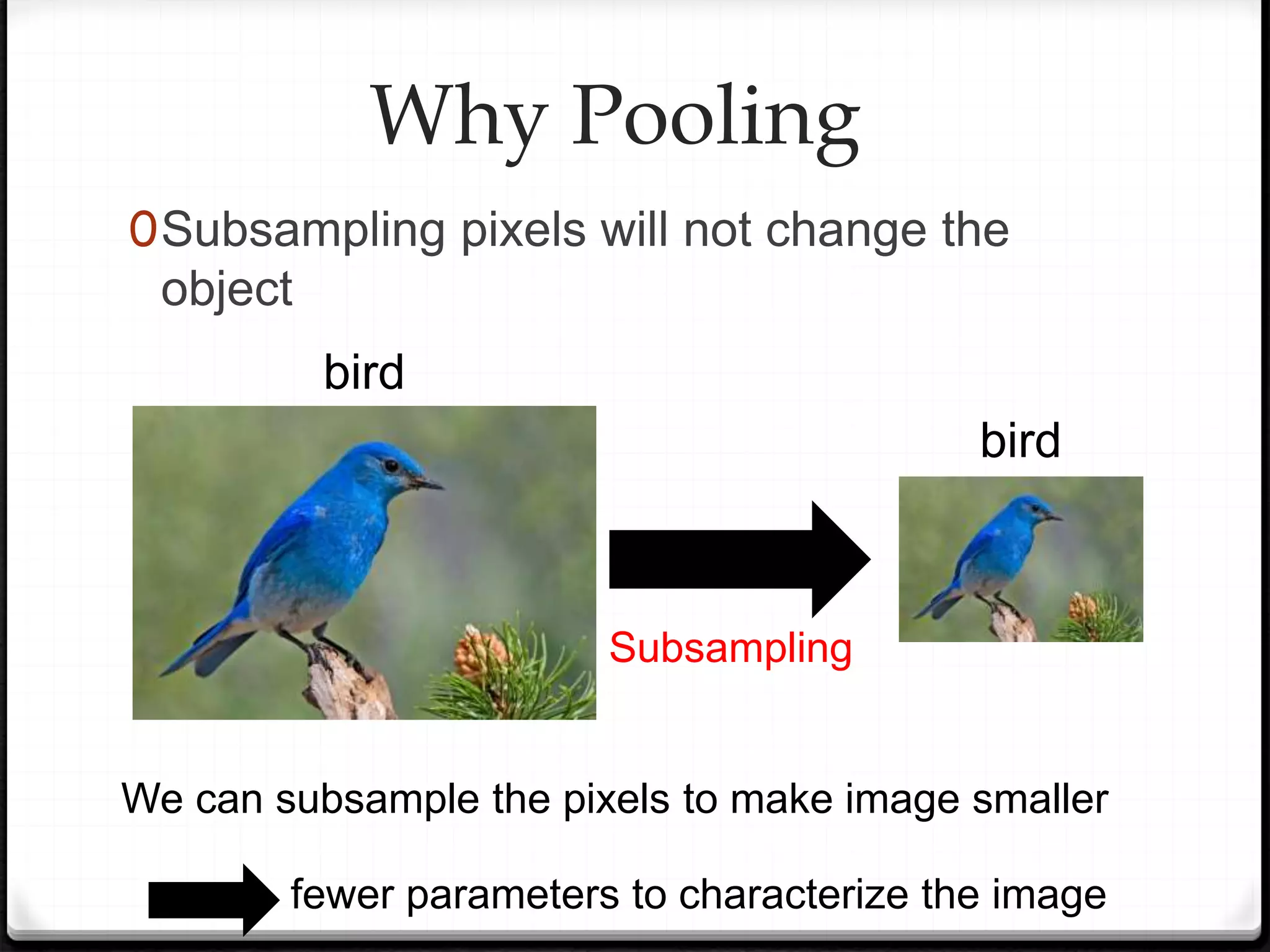
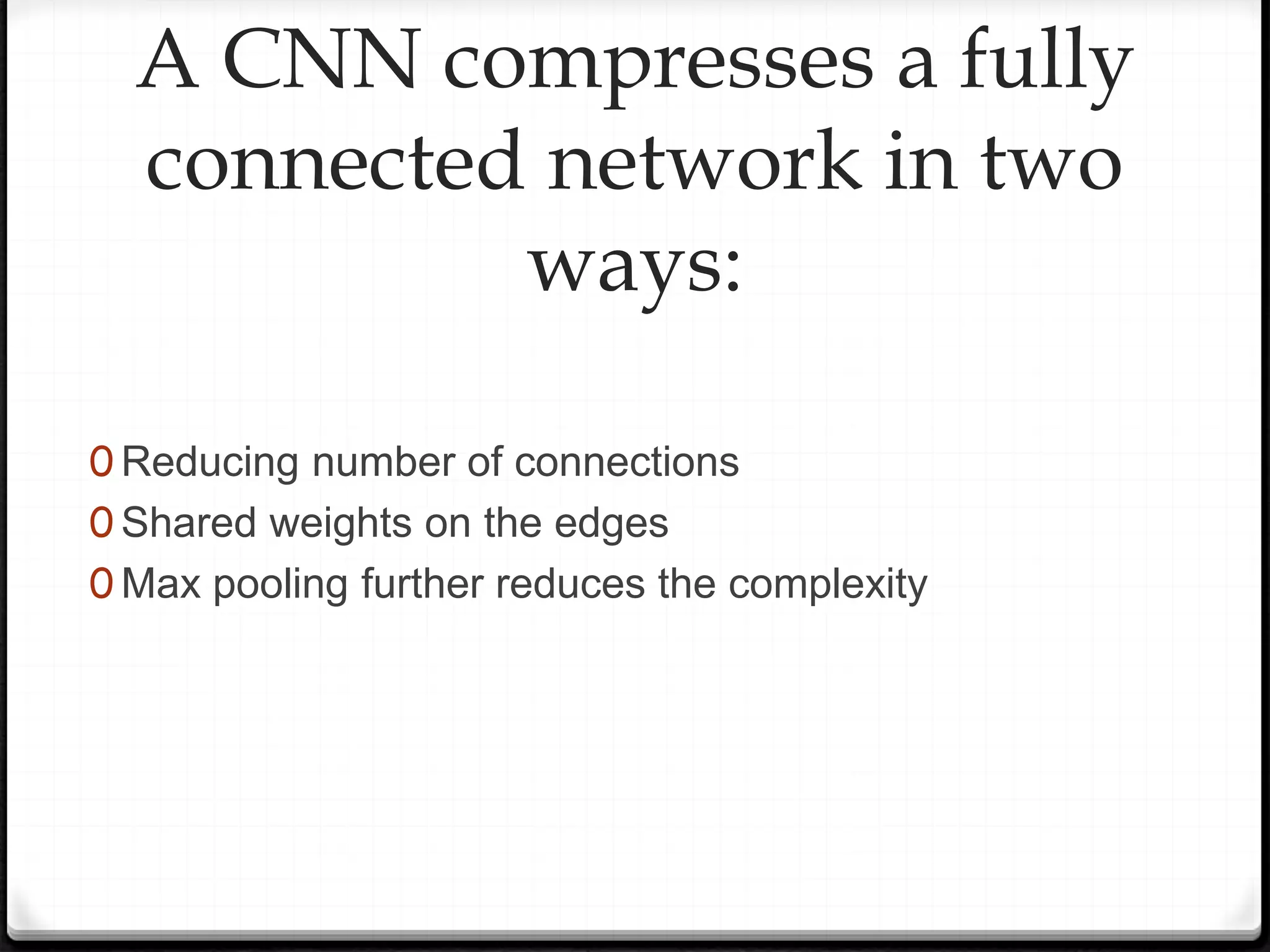
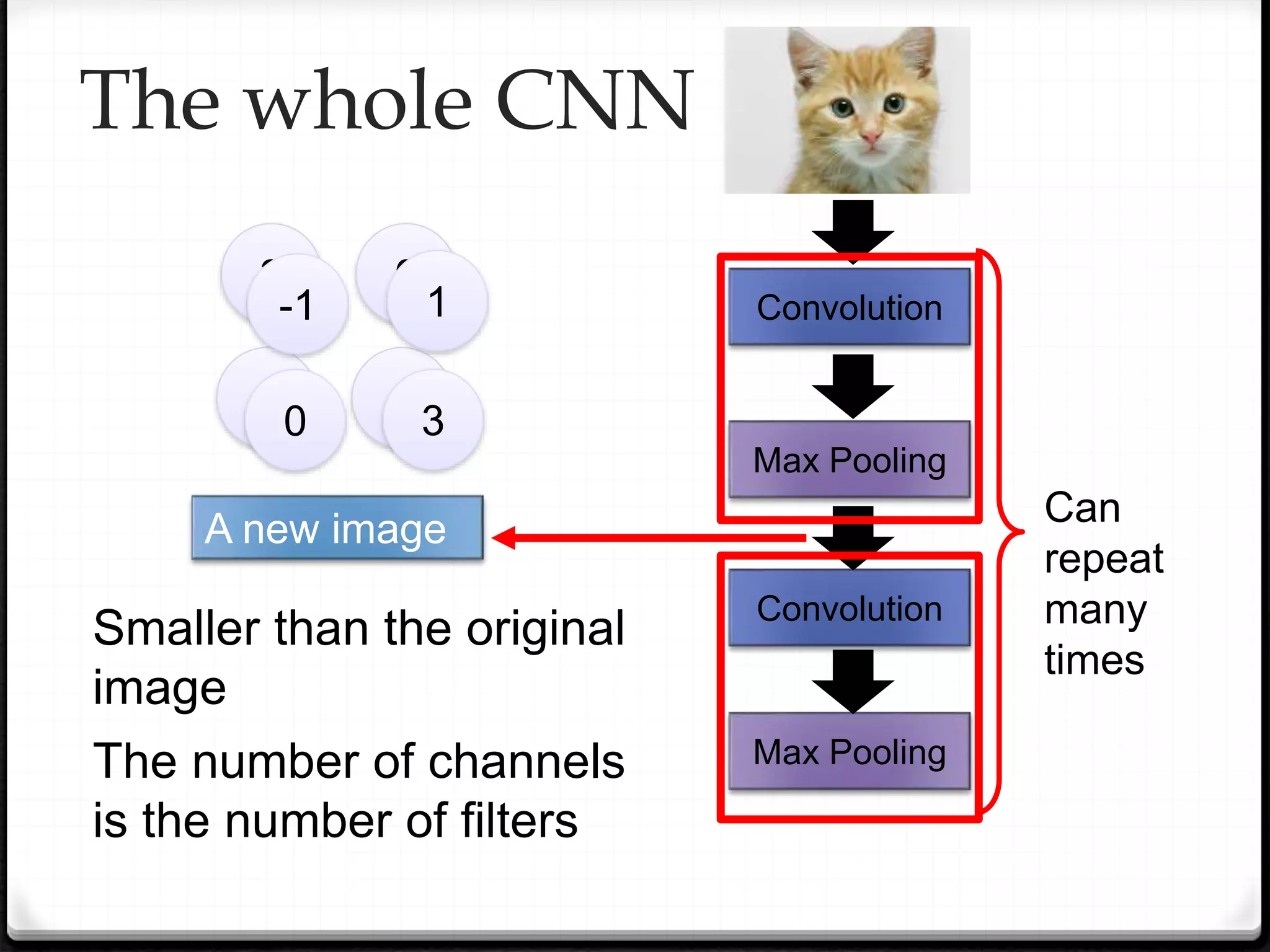
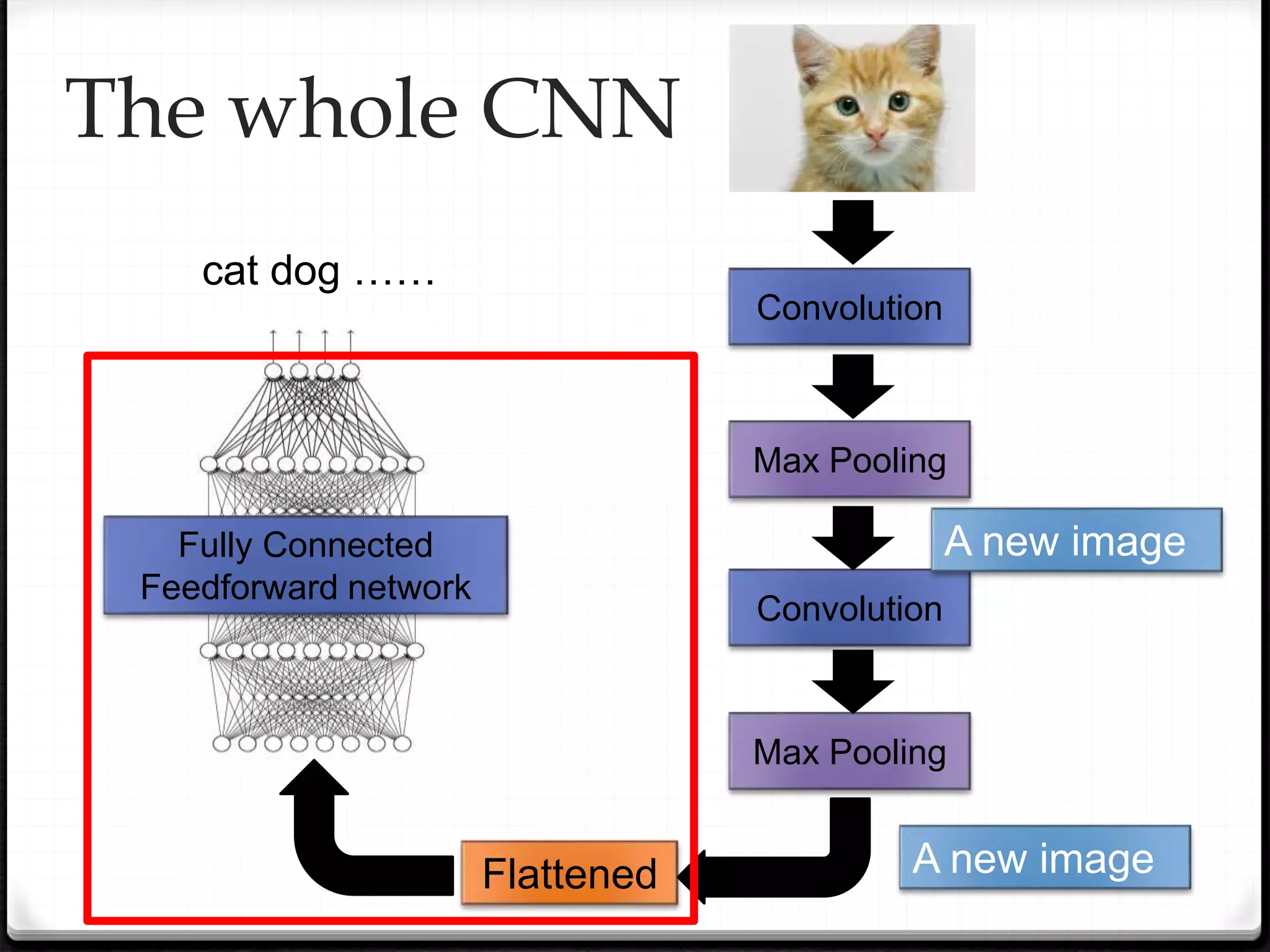
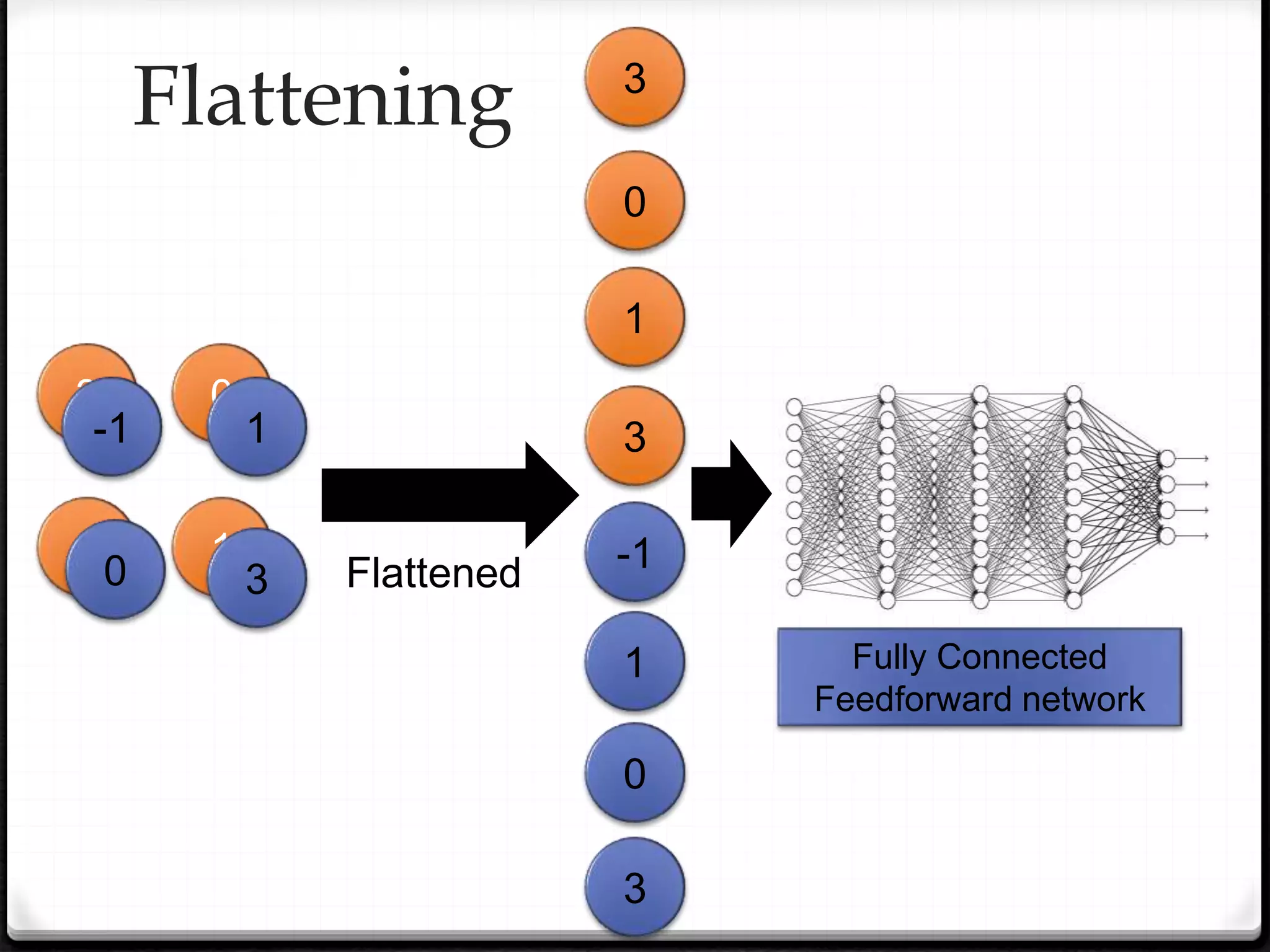
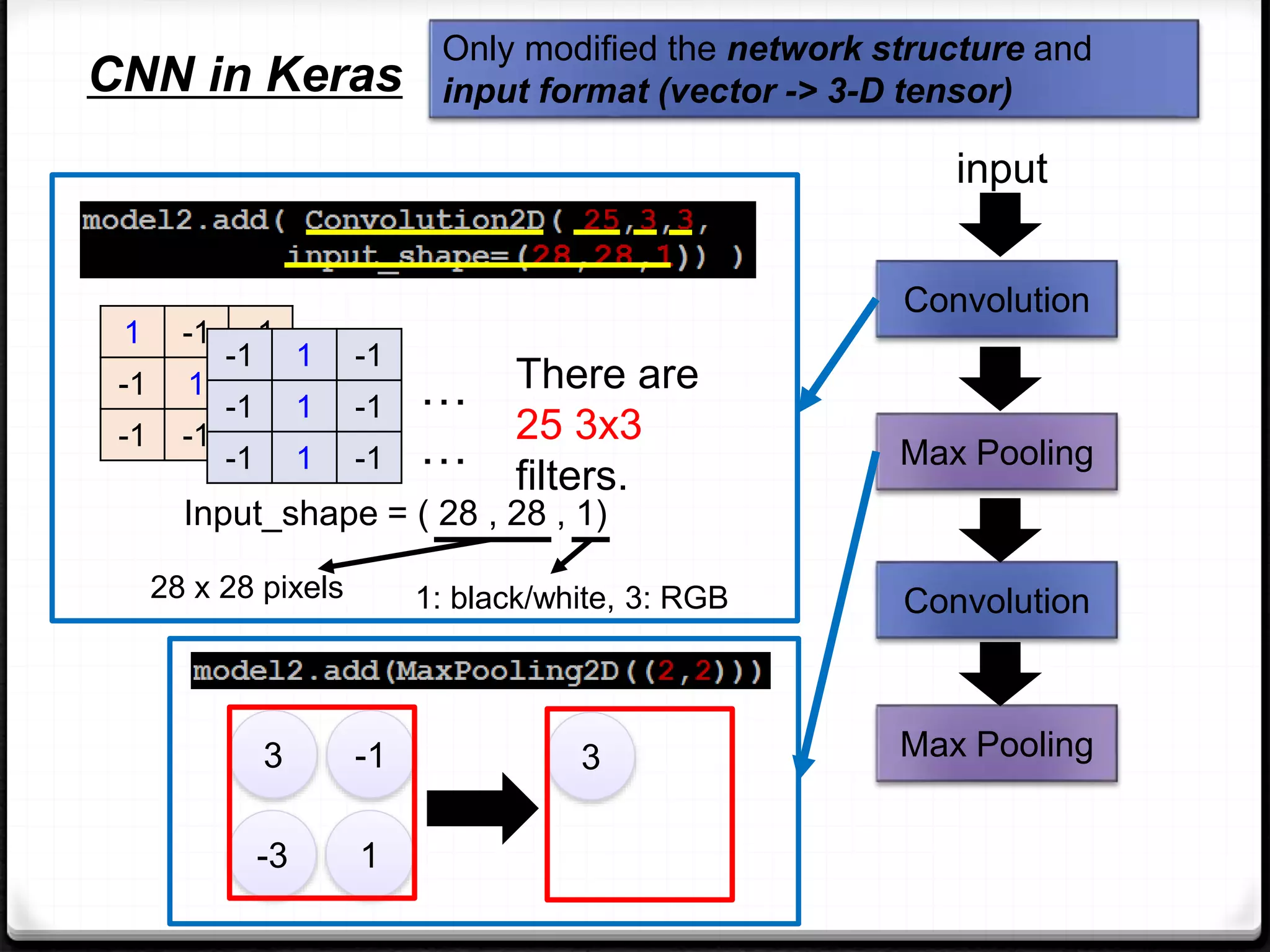


![ Srivastava, Nitish, et al. "Dropout: a simple way to prevent neural networks from overfitting." Journal
of machine learning research (2014)
Bergstra, James, and Yoshua Bengio. "Random search for hyper-parameter optimization." Journal of
Machine Learning Research, Feb (2012)
Kim, Y. “Convolutional Neural Networks for Sentence Classification”, EMNLP (2014)
Severyn, Aliaksei, and Alessandro Moschitti. "UNITN: Training Deep Convolutional Neural Network for
Twitter Sentiment Classification." SemEval@ NAACL-HLT (2015)
Cho, Kyunghyun, et al. "Learning phrase representations using RNN encoder-decoder for statistical
machine translation." EMNLP (2014)
Ilya Sutskever et al. “Sequence to sequence learning with neural networks.” NIPS (2014)
Bahdanau et al. "Neural machine translation by jointly learning to align and translate." ICLR (2015)
Gal, Y., Islam, R., Ghahramani, Z. “Deep Bayesian Active Learning with Image Data.” ICML (2017)
Nair, V., Hinton, G.E. “Rectified linear units improve restricted boltzmann machines.” ICML (2010)
Ronan Collobert, et al. “Natural language processing (almost) from scratch.” JMLR (2011)
Kumar, Shantanu. "A Survey of Deep Learning Methods for Relation Extraction." arXiv preprint
arXiv:1705.03645 (2017)
Lin et al. “Neural Relation Extraction with Selective Attention over Instances” ACL (2016) [code]
Zeng, D.et al. “Relation classification via convolutional deep neural network”. COLING (2014)
Nguyen, T.H., Grishman, R. “Relation extraction: Perspective from CNNs.” VS@ HLT-NAACL. (2015)
Zhang, D., Wang, D. “Relation classification via recurrent NN.” -arXiv preprint arXiv:1508.01006 (2015)
Zhou, P. et al. “Attention-based bidirectional LSTM networks for relation classification . ACL (2016)
Mike Mintz et al. “Distant supervision for relation extraction without labeled data.” ACL- IJCNLP (2009)
References](https://image.slidesharecdn.com/deep-learning-210612061527/75/Deep-learning-31-2048.jpg)
